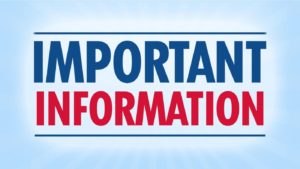 The major reason non-profits lose economic value from donors, at a rate of 40-60% a year, is because the donor is not told that her giving is making any difference.
The major reason non-profits lose economic value from donors, at a rate of 40-60% a year, is because the donor is not told that her giving is making any difference.
This one fact is largely ignored by many non-profits, which is why they continue to struggle financially. It is not uncommon for Jeff and me to see donor files where the donors from last year are giving $1 million to $6 million less (even as high as $50 million less for large non-profits) than they did the year before! Yes, LESS than last year. The same donors!
Why? Because they were asked to give, and then what happened? Either they were never told that their gift made any difference, or they were not told in a way that was convincing.
This area is now reaching a crisis point for a majority of non-profits. And yet, try as hard as we can, we cannot convince leaders to DO something about this. Instead, they are down in the weeds trying to figure out how to prop up their sagging revenue.
Think about how frustrating this is to major gift officers and development directors. They bring in the donors and the money, but they can’t keep those donors because they don’t have much to say to them about how their money was used.
That is why I was so excited to be introduced to an amazing example of non-profit proof of performance from the United Way of Central Indiana. Click this link and take a look at it.
This rather simple-yet-powerful dashboard runs the donor through the four major program categories of the organization (Education, Financial Stability, Health, Basic Needs) and tells the donor exactly what is happening with his gift. And it is updated regularly. This is amazing!
As if that is not enough specific info, they give the donor information on how things are going in the three ways a donor can give: money, influence (advocacy) and labor (volunteer).
This whole system that the United Way of Central Indiana has created starts with impact metrics, which clearly state what the goals of each program are. As a donor, you know exactly what this organization has committed to do in their service area. There are no weasel words or hard-to-understand or technical concepts. It is written in plain, easy-to-understand English.
Here is why I am sharing this with you:
- Your organization is likely losing donors and donor value, much like every other organization is. In fact, if you look at the same donors and their giving from year to year you will be shocked at how high a number it is. Please get this one fact firmly embedded in your head. It IS important and should be the cause of a great deal of motivation and action on your part. (Click here to request a FREE, confidential assessment of how your organization is doing.)
- Print these documents out – the impact metrics and the dashboard with proof of performance – and give them to your top leadership and program people. Ask them if they would support doing something like this in your organization.
- Then stand back and watch amazing stuff happen!
Your caseload donor yearns for information and validation that he made the right decision in giving you money. And “yearns” is the right word. It is an intense longing to know that something good happened because he gave.
You can deliver that by giving your donor this kind of information. Now, building the system to do this right will take time. So don’t get impatient with your program folks. It could take a couple of years. But if you can start now, it will make a tremendous difference in the life of your caseload donors in the near future.
Richard






0 Comments